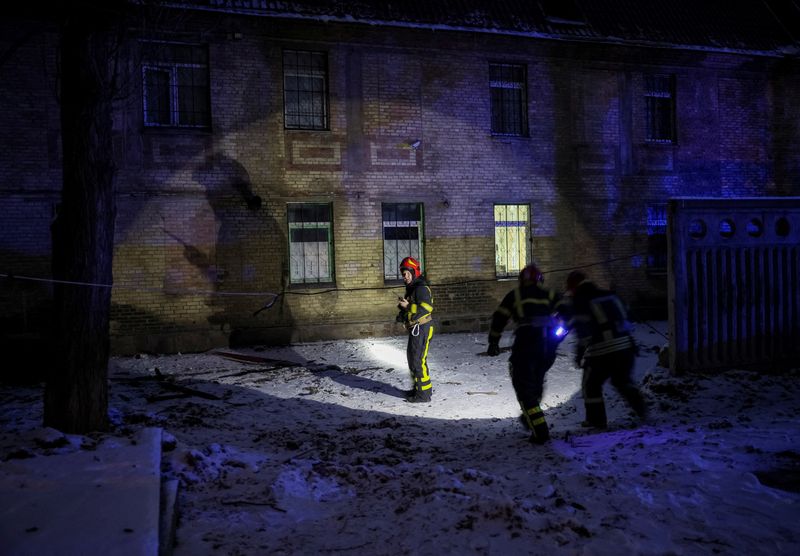What do civilian infrastructure and war crimes have in common
2022.12.16 04:58
[ad_1]

What do civilian infrastructure and war crimes have in common
Budrigannews.com – Amnesty International and the United Nations High Commissioner for Human Rights have called Russia’s attacks on Ukraine’s civilian infrastructure, including energy facilities, possible war crimes.
According to officials in Ukraine, Russia launched dozens of missiles across the country on Friday, disrupting electricity supply in the country’s second-largest city, damaging vital infrastructure in the south, and causing explosions in the capital, Kyiv.
According to the Russian-installed administrator of the region, Ukrainian shelling in the Russian-controlled Luhansk region of Ukraine also resulted in eight deaths and 23 injuries.
According to the Geneva Conventions and additional protocols drafted by international courts, parties to a military conflict must differentiate “civilian objects and military objectives,” and it is against the law to attack civilian objects.
The Rome Statute of the International Criminal Court (ICC), which opened an investigation into possible war crimes in Ukraine earlier this year, also codifies this prohibition.
That appears to be obvious, however some foundation possessed and utilized by regular folks can likewise be a tactical goal. “those objects which by their nature, location, purpose, or use make an effective contribution to military action” and “whose destruction or capture offers a definite military advantage” are the definitions of military objectives.
Military law expert Michael Schmitt writes in the Articles of War blog run by the Lieber Institute for Law & Warfare at the United States Military Academy West Point that power infrastructure has long been considered a valid military objective as long as it supports the activities of an enemy army, even if the system supports the civilian population.
It seems increasingly unlikely that Russia’s military can identify a “definite” military benefit for each attack as the scale of its attacks on the power infrastructure has increased.
“Basically, Russian powers are very likely striking many focuses on that don’t qualify as military targets,” Schmitt contends.
More World’s only aquarium exploded in Berlin
Russia claims that it attacks energy infrastructure as well as military targets.
Regardless of whether a portion of the objectives could be viewed as military goals, that isn’t the finish of the story, says Katharine Fortin, academic partner of worldwide regulation at Utrecht College.
She stated that the military must consider whether the civilian losses and damage caused by such attacks are excessive in comparison to the tangible and direct military advantage.
She stated to Reuters, “In this instance, the incidental loss of life and injury to civilians that can be expected seems very large given that power outages are affecting people’s access to healthcare, making it impossible for surgeons to continue their work, and creating conditions in which vulnerable people are dying due to the cold or hunger.”
Russian attacks in the past two months have “focused on eliminating infrastructure crucial to the means of civilian survival such as heat, water, power, and medical facilities,” according to Nigel Povoas, lead prosecutor for a team of international experts assisting Kyiv war crimes investigators.
The scale and intensity of the attacks, according to Schmitt and Povoas, may also qualify them as “acts or threats of violence the primary purpose of which is to spread terror among the civilian population,” according to Schmitt.
The rulings of the United Nations tribunal for the former Yugoslavia pertaining to the siege of Sarajevo confirmed that this is against international humanitarian law and constitutes a war crime.








